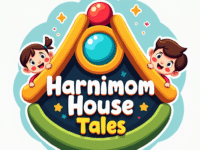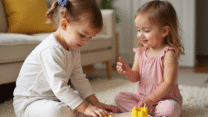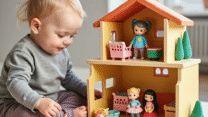
How to Encourage Independent Play in Toddlers (Without Guilt!)
Yes, your toddler can learn to play solo—and it benefits everyone in the house.
When my daughter was 18 months old, she wanted me beside her all the time. Playdough? Only if I rolled it. Blocks? Only if I stacked them. I felt pulled between her and my never-ending to-do list. I wondered, Is it okay to step back? Will she feel ignored?
Then I learned a powerful truth:
Independent play isn’t about leaving your child alone—it’s about giving them the space to discover their own creativity and confidence.
And no, encouraging solo play doesn’t make you a neglectful parent. In fact, it may be one of the best gifts you can give your toddler—and yourself.
Why Independent Play Matters (More Than You Think)
Play is how toddlers learn. But while play with caregivers is important, solo play builds skills they can’t fully develop with us always guiding them.
Cognitive Skills
When a toddler figures out how to fit a puzzle piece or stack cups on their own, they’re flexing real problem-solving muscles.
Creativity & Focus
Left to their imagination, toddlers can invent stories, explore textures, or build towns out of blocks. These quiet “in the zone” moments are golden.
Confidence & Resilience
Every moment they engage solo—without asking for help—they’re learning “I can do this myself.”
And for parents?
Let’s be honest—it means time to fold laundry, sip a hot drink, or even rest for a minute without guilt.
Signs Your Toddler Is Ready for Independent Play
Even if your toddler seems extra clingy, they might be more ready than you think.
Look for these small cues:
✔️ Playing with a toy for 3–5 minutes without prompting
✔️ Repeating actions or exploring the same toy in new ways
✔️ Trying to “organize” or line up objects (early signs of focus!)
No signs yet? That’s okay. Independent play is a learned skill, not a built-in personality trait. And like any new skill—it takes practice, patience, and a bit of setup.
How to Set Up Independent Play (That Actually Works)
1. Start With Small, Safe Spaces
Create a yes space—a toddler-safe area where they can explore freely without constant correction.
Tip: Use baskets to group similar toys (e.g., animals, blocks, instruments). Toddlers often engage longer when they know where things are.
Keep it nearby. Sit in the same room at first, but don’t initiate play. Let them lead.
2. Rotate Toys Weekly
Clutter overwhelms toddlers.
Offer just 4–6 toys at a time—especially open-ended ones like:
- Blocks
- Dolls or animal figures
- Scarves or fabric squares
- Stackers or puzzles
- Toy kitchen tools
Store the rest out of sight and rotate weekly. The novelty keeps them interested!
3. Use a Visual Timer
Start with just 5 minutes and gradually increase.
Try saying:
“You’ll play until the sand runs out, then we’ll read a book together.”
Visual timers (like sand timers or printable clock cards) help toddlers understand when they’ll reconnect with you, which eases anxiety.
Need a timer chart?
Grab our Free Daily Routine Planner—includes a printable visual timer and play plan!
👉 Download Free Routine Planner
4. Celebrate the Win
When your toddler plays independently, let them know you noticed:
“Wow, you were building your tower all by yourself! That was amazing!”
These small praises reinforce their confidence and willingness to try again next time.
My Toddler Didn’t Want to Play Alone—Until This
At first, my daughter cried the moment I backed away. So I didn’t. I stayed near, but quiet—letting her guide the play.
Each day, I sat a little farther.
We made a “play plan” together: she picked 3 toys and told me what she wanted to do. I used a timer. I praised every small success.
Within two weeks, she was playing solo for 20 minutes every morning. No screens, no guilt, no meltdowns.
Books That Support Independent Play
Reading stories about brave, curious, or creative characters helps toddlers imagine themselves that way too.
“Honey Who Roared With Courage”
Little Honey doesn’t feel brave when something scary comes her way. But with kind friends and a few deep breaths, she learns that real courage means trying, even when you’re scared.
Perfect for helping toddlers face solo time with confidence.

👉 Shop Now on Gumroad
Independent Play Is a Skill, Not a Personality Trait
Just like walking or potty training, it takes:
✔️ Time
✔️ Repetition
✔️ Encouragement
Not every day will be perfect. Some days, they’ll cling. Other days, they’ll surprise you with focus and creativity.
But every minute of solo play—even just 3 minutes—builds toward something beautiful: a toddler who feels secure in their own imagination.
You’re Not Ignoring Them. You’re Empowering Them.
Independent play isn’t about pushing your child away.
It’s about gently guiding them toward self-trust.
You’re giving them room to grow—and giving yourself a breather to be a calmer, more present parent.
You’re doing amazing. And yes, you deserve that hot cup of coffee.














Leave a Reply